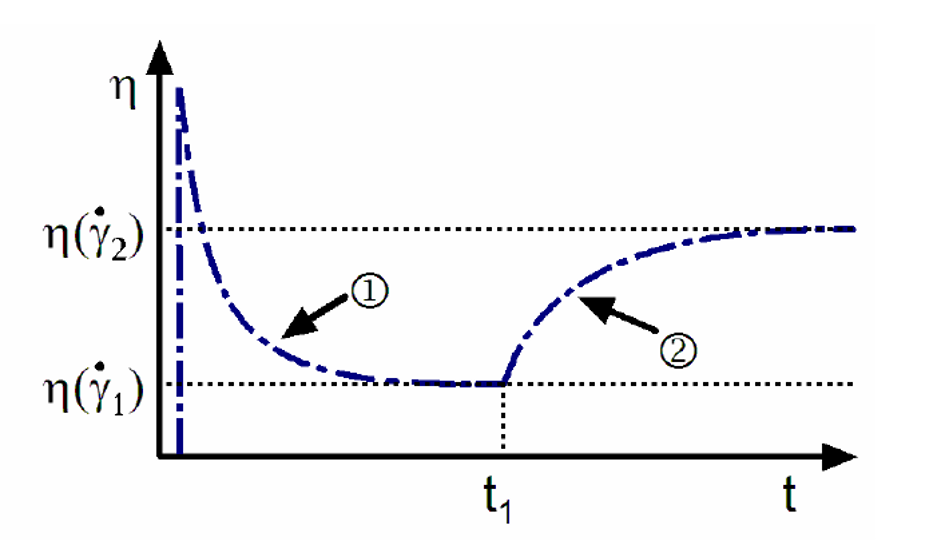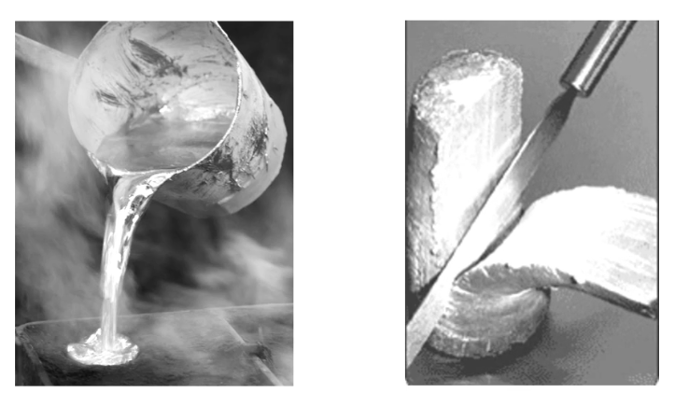Thixotropie
Thixotropic substances deviate from Newtonian behavior in that they show a decrease in their flow resistance with constant shear with increasing shear time. If the shear is interrupted or reduced, the fluid recovers, which is associated with an increase in viscosity. Fig. 1 shows the basic course of the viscosity of a thixotropic substance under shear with the shear rate ý1 up to time t1, then with a reduced shear rate ý2. Area 1 shows the typical decrease in flow resistance over time equilibrium value Ƞ (ý1) ("breakdown"), area 2 shows the recovery ("rebuilding") characteristic of thixotropic substances with reduced shear stress to the second equilibrium value of higher viscosity Ƞ (ý2), according to Heidinger, M.: Messung rheologischer Eigenschaften unter Berücksichtigung des Rheomat-15. Contraves, Stuttgart (1965).
The principle of the thixotropy of light metal melts (Fig. 2, Salzburger Aluminium Group) is the basis of the rheocasting process and was discovered in the 1970s at the Massachusetts Institute of Technology.






























